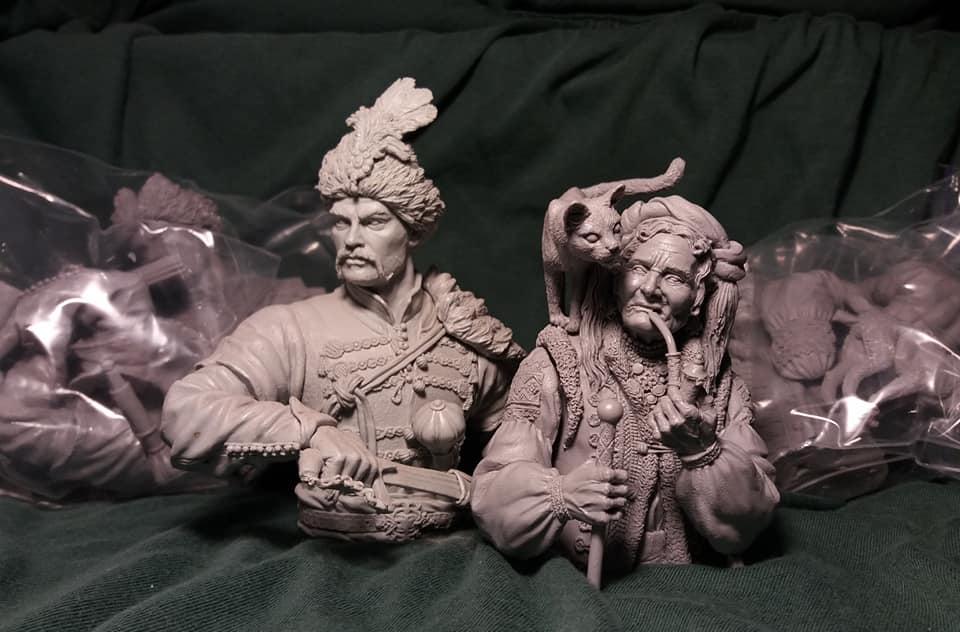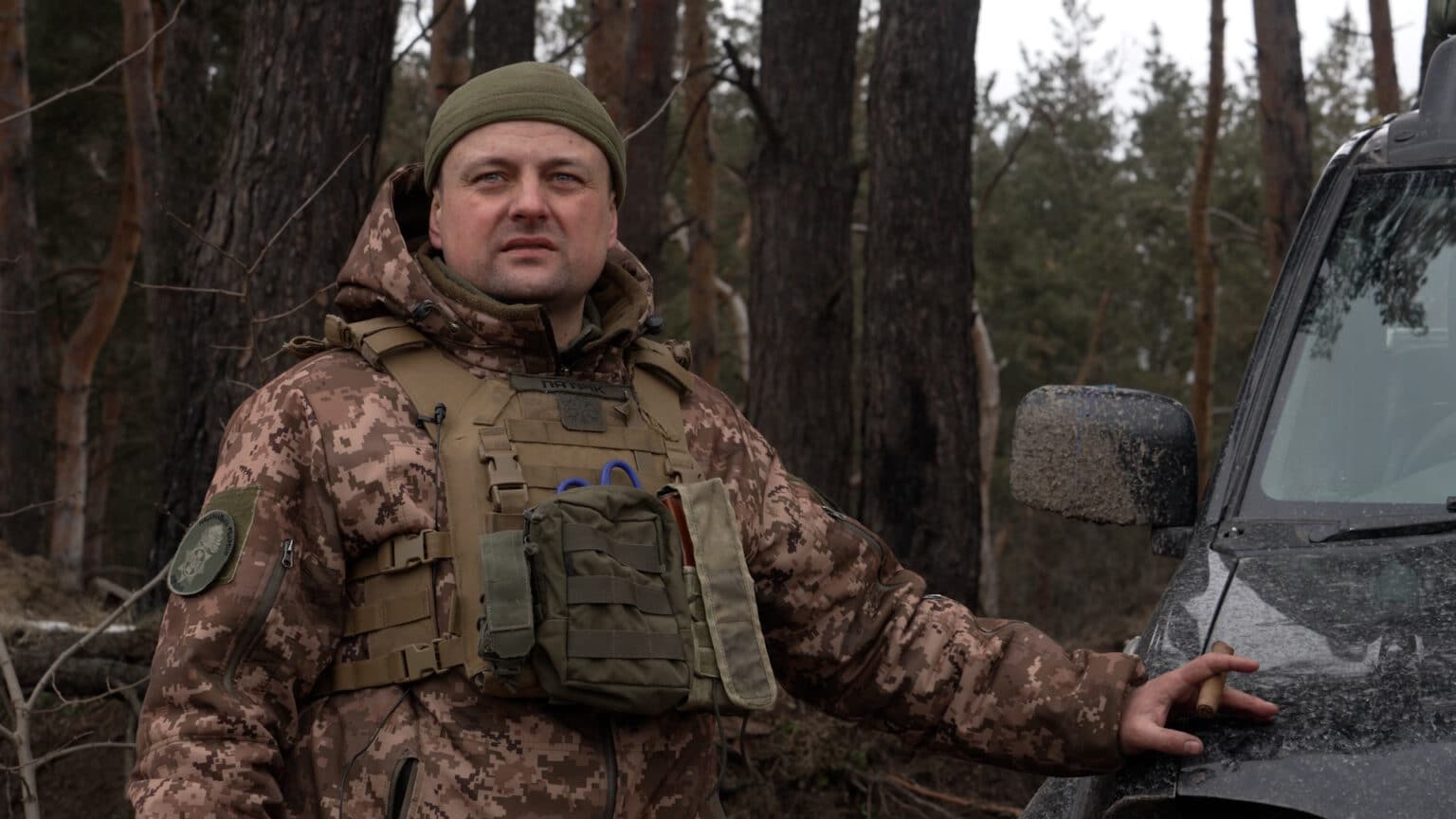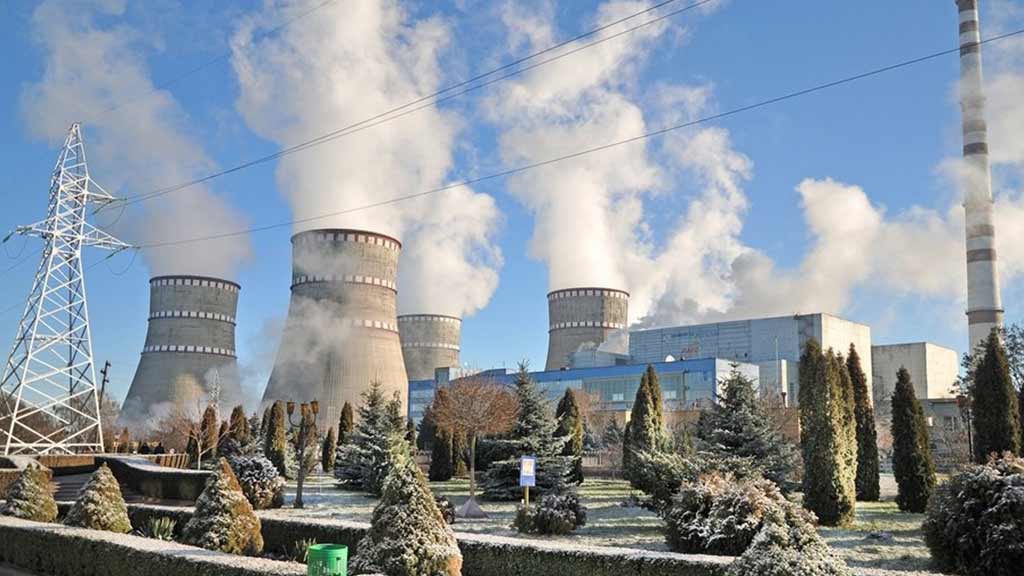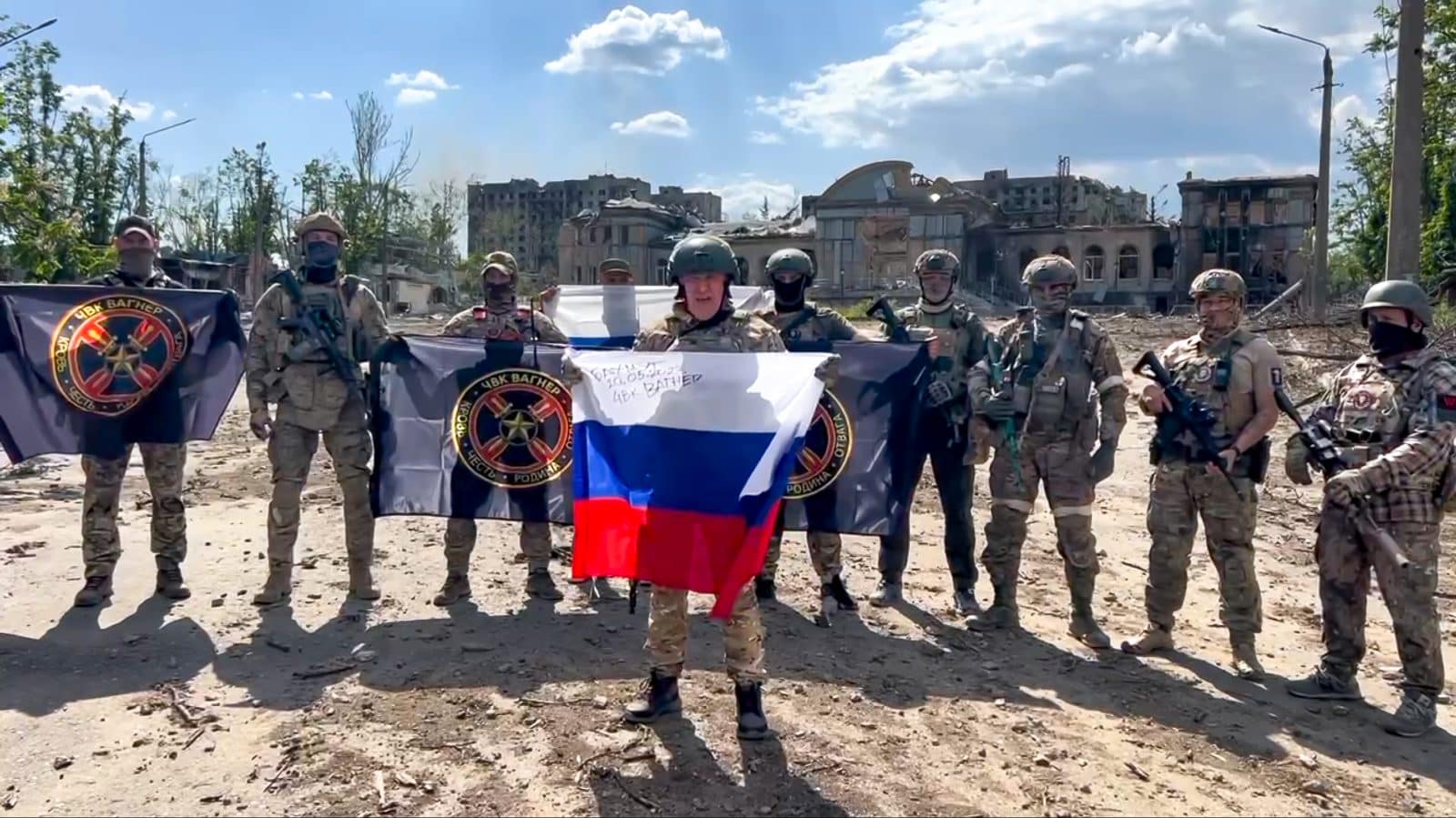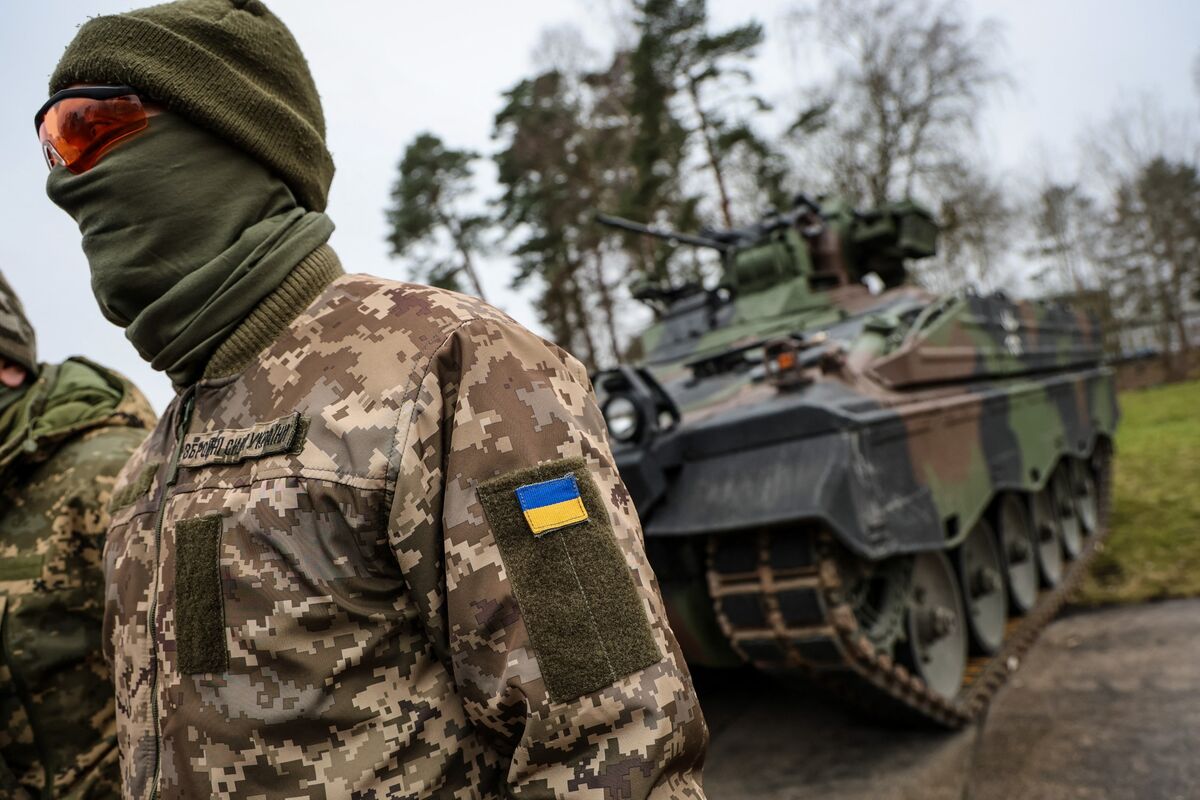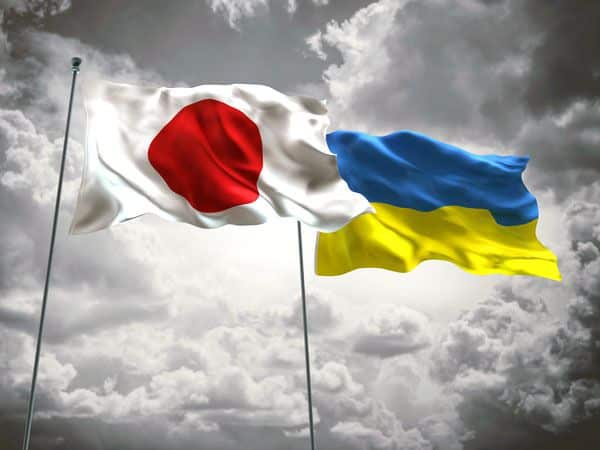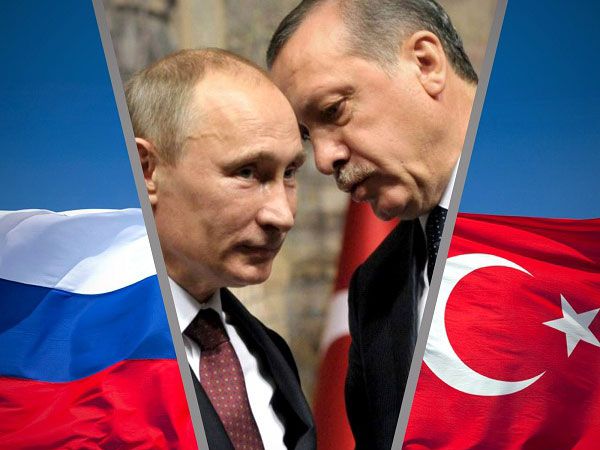Anton is a fighter in the National Guard in his military life, and in civilian life, he is a musician and sculptor who creates busts of prominent hetmans and commanders for Ukraine and other countries. Just a year or two ago, he couldn’t have imagined that war, represented in the details of historical costumes and miniature orders in his workshop, would become a reality and compel him to learn how to handle new weapons in order to liberate his native region.
We tell the story of Anton, with the call sign Patrick, who took part in the liberation of the Kharkiv region (east of Ukraine).
Anton, what were you doing before the full-scale invasion? And what are you currently doing in service?
I was involved in sculpture, primarily miniatures, specifically military miniatures. That’s why I have a good knowledge of military history, uniforms, various combat skills specific to different cultures or eras. I used to learn fencing, hand-to-hand combat, and even participated in airsoft. It was mainly to understand how soldiers in the past had to perform certain exercises, fight, crawl, and handle weapons. It was very interesting to experience it firsthand. However, I never expected that I would have to do all of this myself in a real war.
Source: Sirko Toys
Currently, I hold the position of a rifleman in the National Guard of Ukraine.
Are your works available for public viewing? Can readers familiarize themselves with them?
Yes. I have pages on Facebook and Instagram, as well as a page for our family studio, which we ran before the war — Sirko Toys. We shared photos of the Cossacks we made from tin, in various painted designs: I sculpted them, then they were cast in tin, and my wife and other artists painted and detailed them. We also created busts of prominent Ukrainian figures. We made a lot of them.
Sometimes I did something for other manufacturers, both Ukrainian and Western. For example, my models were ordered in Britain.
It happened that the preparatory stage took longer than the actual production of the model. Because every model needs to be studied. You need to know everything about it. For example, you make a portrait of a general or a commander. But you depict him at a specific historical moment, during a certain battle. And then you can’t hang an order on him that he received for this battle. After all, at the moment you want to capture, he did not have it yet. All this needs to be studied.
Often I had to ask for help from historical consultants, and specialists who know more than I do and were my curators.
Who inspires you the most among all the figures you have created? Whose fate captivates you?
First of all, I made busts of all the historical figures from Ukraine. They were prominent figures like Hetman Vyhovsky and Khmelnytsky. I also had to create the headquarters of various notable figures, such as Napoleon. I made the headquarters of all the countries involved in the Napoleonic Wars, including the British, Prussians, and Austrians.
The most interesting part was making the busts of Ukrainian figures. We even participated with them in the filming of the movie The Battle of Konotop — our figures appeared in the shots. For example, the figure of Hetman Vyhovsky on horseback, who led that battle.
When the full-scale invasion began, how did you decide to go to the front lines? How did you join the service?
Before the invasion, I was working on a commissioned figure. When the shelling started in the morning, on the 24th, I was still in shock, not knowing what to do. The next day, we stocked up on food and necessities for the family. On the 25th, I started looking around the city for places where I could join the Ukrainian Armed Forces. I went to the headquarters of the Territorial Defense Forces, but it was already empty. I tried to go to the draft board, but it was already closed. The units that were formed in the first couple of days had already gone to the frontlines. On February 26 I managed to join the 5th Slobozhansk Brigade, which was actively recruiting soldiers at that time. They accepted me, and since then, I have been serving.
Source: Gwara Media
Which events of your service do you personally consider the most significant?
The most important thing for me was, first and foremost, joining the unit I am in because here I have my true friends and an amazing team that I am proud of and value each and every one of them.
Then, it was the advance when we started to liberate the Kharkiv region from the Russian army.
“A very significant moment was when we liberated Balakliia! Those memories are so vivid! People there were falling to their knees, embracing us, everyone was crying. Even now, when we recall it, tears come to our eyes again,” says Anton Derbilov.
By the way, during the first phase of the full-scale war (let’s say, before summer), were you defending Kharkiv?
During the first 100 days of the war, I was indeed defending Kharkiv. I stood with my unit on the Kharkiv Ring Road, waiting for the Russian attack. We were prepared to repel tank assaults. Those days passed as we waited for the Russian advance, fortifying our positions, constructing dugouts, and essentially building a fortress near Kharkiv.
Then we were sent to Balakliia, where we stayed for the entire summer. From the beginning of September, specifically on September 6, we went on the offensive and constantly moved together with the combat brigades. We went from Balakliia to Izium, passing through numerous small villages from Izyum to Borova, and entering Borova through Pidlyman. We stormed Pidlyman, which was our first major battle with tanks, where we had our first casualties and injured soldiers. We repelled three tank waves and then endured about five days of Russian pressure. We were constantly shelled, and we went on reconnaissance missions to Russians, feeling out the Russian defense in Borova themselves.
Then we were relieved, meaning the brigade that was supposed to advance towards Borova liberated it, and we were able to break out of the encirclement.
What were your initial emotions in the liberated territories, particularly in Balakliia, besides the fact that people welcomed you? Volodymyr Zelenskyy mentioned in the past that in Kherson, for example, when you enter, you see how Russia created its information space — those symbols are everywhere
The first thing that caught our attention was the widespread presence of billboards in Balakliia as we conducted clearance operations there. The billboards said “with Russia forever.” Our commanders started burning them. Russian social advertisements and tricolor flags were everywhere. It was very unusual. You immediately felt that you were on a territory that had just been liberated from Russian troops and that they had been there.
Then we started searching houses where Russian soldiers were staying, and everything was in disarray. Abandoned uniforms, equipment, ammunition, scopes, cartridges, anti-tank weapons — we found all sorts of things! We took some equipment details for ourselves, which later proved useful during our advance and battles in Kreminna.
When you were clearing those areas, did you encounter Russians hiding there? Did you capture them? How did they hide?
Yes, we captured prisoners both in the forests and when they came out on their own, as well as at their hiding spots where they thought they wouldn’t be exposed. Sometimes they were exposed when someone needed to buy something, like food or cigarettes. They came, and someone noticed that they weren’t locals because of their accent. Sometimes a local said, “This is a Russian soldier; I know him.” We took those soldiers, and they showed us where others were hiding. It happened like that.
Sometimes, one of them stayed injured in a house, trying to pass as a civilian. When we searched the houses during clearance operations, we came across these individuals. We knocked on their door, checked their documents, and found out that they were Russian soldiers. When we entered Pidlyman, no one expected us there (we were coming from the marsh side), and Russians were very surprised. One of them was riding a stolen sports moped, and another was captured while guarding an ammunition depot.
“It was a shock for them that we suddenly appeared,” said Anton Derbilov.
I want to focus on Borova because it is part of the Kharkiv region. Borova was liberated later than Izyum and Balakliia. Can you tell me how the liberation of Borova took place?
We approached Borova in two columns. Our brigade was supposed to enter from the Pidlyman side, while another was to approach Borova from the highway. A battle started. While we were advancing into Pidlyman, another brigade encountered an ambush and couldn’t make progress that day. But our plan was to enter simultaneously, from the south and north.
So, they were repelled, and we were left alone in Pidlyman.
“Perhaps someone expected us to retreat, but we defended, repelled tank attacks, and mined the bridge — the only route from Borova to Pidlyman,” emphasized Anton Derbilov.
We established a circular defense and stayed there for several days. Our comrades couldn’t bring us food or ammunition. We even had to carry our dead and wounded on our shoulders for several kilometers to evacuate them.
Only later, after five days, when another brigade managed to get to Borova and liberate it, we were unblocked and trucks with food came to us. Before that, we hadn’t eaten anything for almost two days. Then the locals started feeding us, they helped us a lot! They fed the guys, placed them in their homes, in their basements. They were so helpful that we still remember them as our family.
Did you have enough weapons in your counteroffensive? How do you assess it?
We had as many weapons and ammunition as we could personally carry. We didn’t really anticipate encountering such strong resistance. We were told that there probably wouldn’t be anyone there anymore. Until then, our movement had been relatively unopposed, as Russians were retreating quickly.
However, near Borova, we encountered their defense for the first time. Neither side was expecting each other. It was a chaotic first battle. They threw groups at us with tanks and infantry fighting vehicles, but their infantry was reluctant to advance alongside the vehicles. We repelled them separately, dealing with tanks and infantry separately. Later, they didn’t notice when we went on reconnaissance missions to their positions. At that time, they didn’t have thermal sights for night vision, so we could see them at night, but they couldn’t see us. They moved as they were accustomed to and were extremely surprised that we could see and shoot at them.
There were units from the Luhansk People’s Republic (LPR) and Russian infantry units. By the way, I remember that when we launched the assault on Pidlyman, we were given imported grenade launchers. However, there was no communication or internet access. Previously, we received, for example, Swedish grenade launchers and watched tutorials on YouTube on how to aim them. But here, without any network, they gave us a bunch of foreign equipment. So, while we were under fire, we sat there and figured out how to use them. When the tanks came at us, we acted quickly. We employed our rocket-propelled grenades and the imported grenade launchers effectively.
Did you have foreign weapons and equipment that were given to you and you felt: wow, this is a qualitative change of weapons?
Those grenade launchers were a great help to us. But overall, we are not the unit that receives new imported equipment first. We are still fighting with Soviet-era weapons. My rifle is from 1982.
We had grenade launchers from 1968-1965 and Degtyaryov machine guns from 1942-1944. But we fought with what we had, and we fought well.
When you entered Borova, what struck you the most about what you encountered there? Personally, I was surprised that they had a curfew until 2 p.m.
When we liberated Borova, we conducted clearance operations, and what surprised us was that people everywhere greeted us with great joy, constantly.
“Sometimes we woke up at five in the morning, moved out on a mission, and didn’t have time for breakfast. So, we’re going on a clearance operation, and as we pass through residential areas, people there fed us, gave us drinks, and offered pastries,” recalled Anton Derbilov.
We entered a courtyard to check documents, and they treated us with fruits, some kind of compote, and someone even managed to have borscht (Ukrainian soup made with red beetroots as one of the main ingredients). They gave us food to take with us. We returned full, carrying a bunch of bags. And we understood that if we didn’t take it, they would be terribly offended! It was evident that people were eagerly waiting. They saw us and shouted, “Guys! What took you so long?”
Were you not afraid that you would be poisoned?
No, not at all. We were warned that this could happen, but it never did. Not even once. Even when we were in Donetsk and Luhansk regions. Not once, not a single soldier was poisoned.
Where does the call sign Patrick come from?
Probably since I was 15 years old when I was involved in historical reenactments. At that time, I had a great interest in Irish tales and legends, and my favorite character was Black Patrick. My friends started calling me that. Later, during my participation in airsoft during what I call the first war in 2014, my teammates also called me Patrick.
Have you come up with ideas for future works during your service?
Certainly. Since the beginning of the full-scale war, people have been asking me, “When the war is over, will you start making sculptures of Ukrainian army soldiers?” And of course, I will. But first, we need to finish the war. Return home, resume my profession. I truly hope that by then, my hands and eyes will still be with me.
Last question: who supports you the most? Perhaps, businesses, volunteers. And what kind of letters do your loved ones and acquaintances send you, any kind words?
We constantly feel support from our loved ones and from Ukrainians in general. Before the war, I was actively involved in social life — as an artist, I had many acquaintances all over the world, and participated in exhibitions, festivals. I conducted workshops throughout Ukraine. It turned out that during the war, all these people — artists, musicians, clients, and my students are helping us. Even this armor I’m wearing now was bought for me by my students. Musicians from my band collected funds for our vehicle. Ukrainians from our diaspora in Germany, the UK, and the USA constantly write and send something to us.
Even just people who communicated with me on the Internet started to help when the war began. For example, in the first weeks it was impossible to buy gloves because the shops were closed. And we were standing at checkpoints and freezing. And we were sent these gloves from England.
Something is constantly coming from people I have never seen in my life. So we feel that the whole world is behind us.
Originally posted by Serhii Prokopenko on Gwara Media. Translated and edited by the UaPosition – Ukrainian news and analytics website
See also: How negative personnel selection reduces the combat-ready of the Ukrainian army

